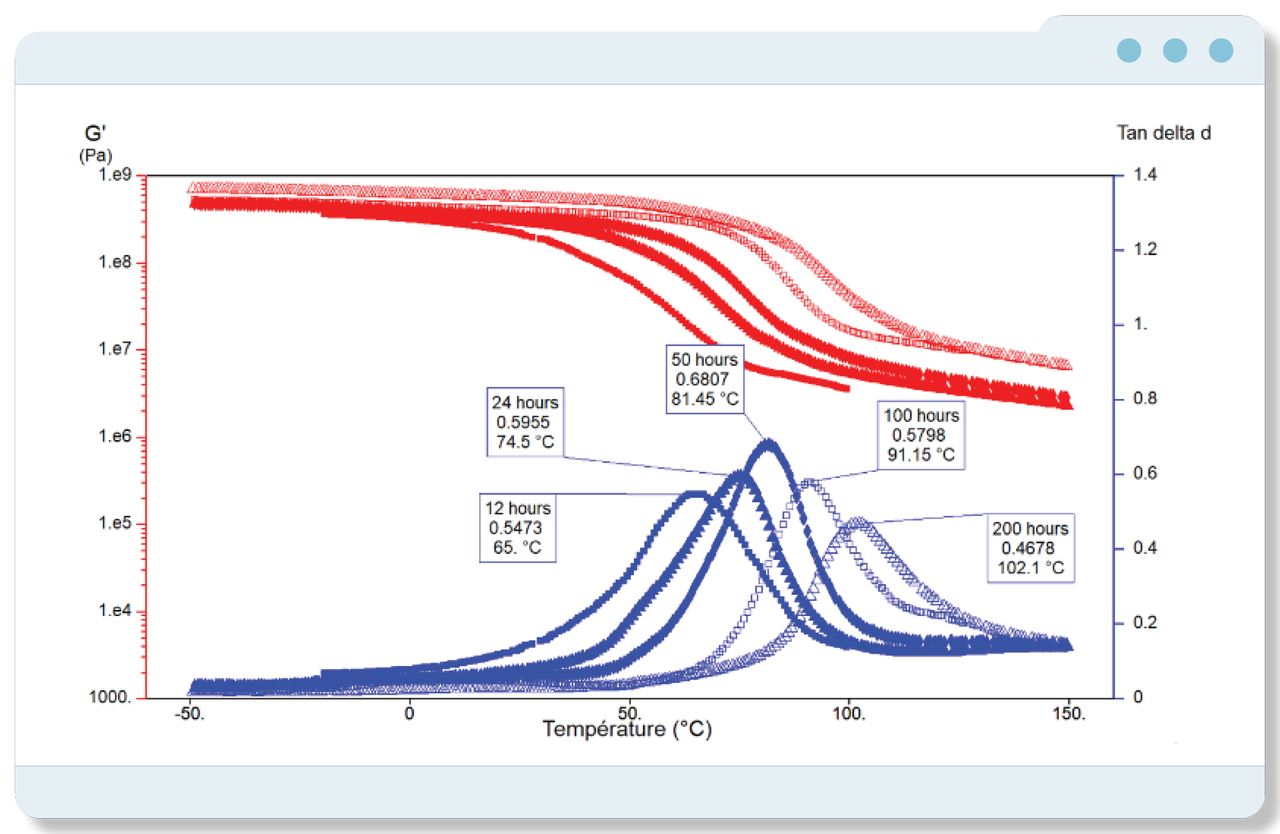Effect of Aging on Mechanical Properties of Polymers
During polymer manufacturing, the molecules do not have enough time to move into the correct position that corresponds to a stable thermodynamic equilibrium, resulting in freezing of polymer molecules far from their optimal positions. With time, the polymer structure becomes more compacted, which affects mechanical properties. This phenomenon of changing properties with time is called “physical aging” and can have a drastic effect on their durability and respective applications.
DMA measurements of viscoelastic properties are a key tool to measure the aging effect. As an example, the figure shows a temperature sweep performed from -50°C to 150°C on five different PVC specimens aged 12, 24, 50, 100 and 200 hours. The modulus G and Tan Delta peak were observed to increase with the increase in aging of PVC.


